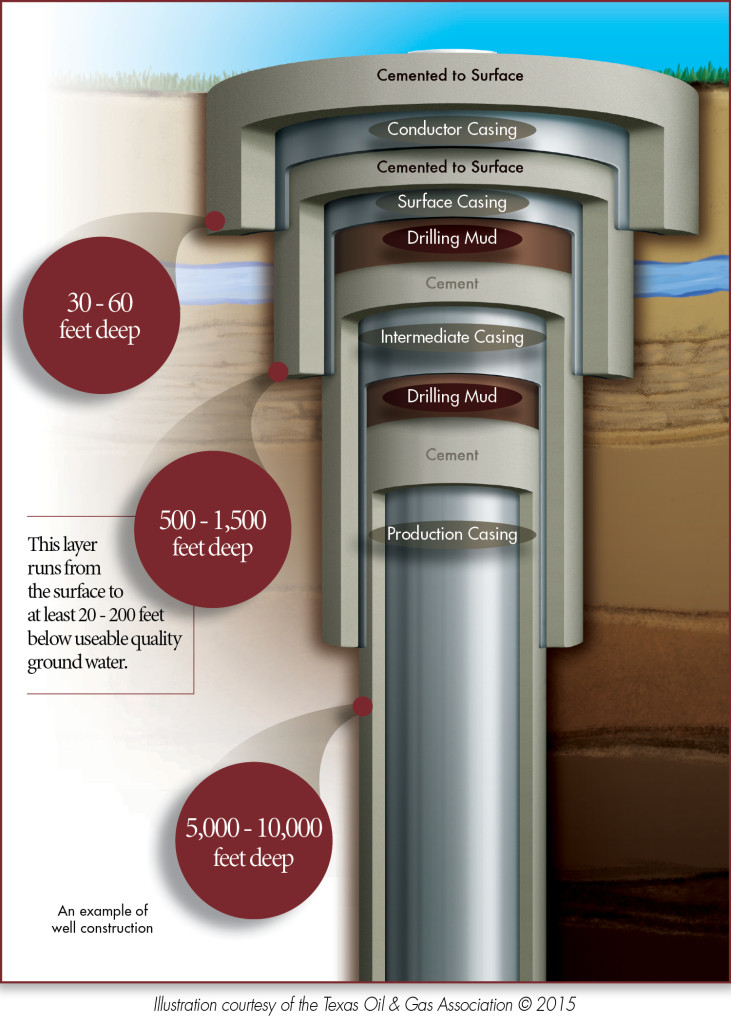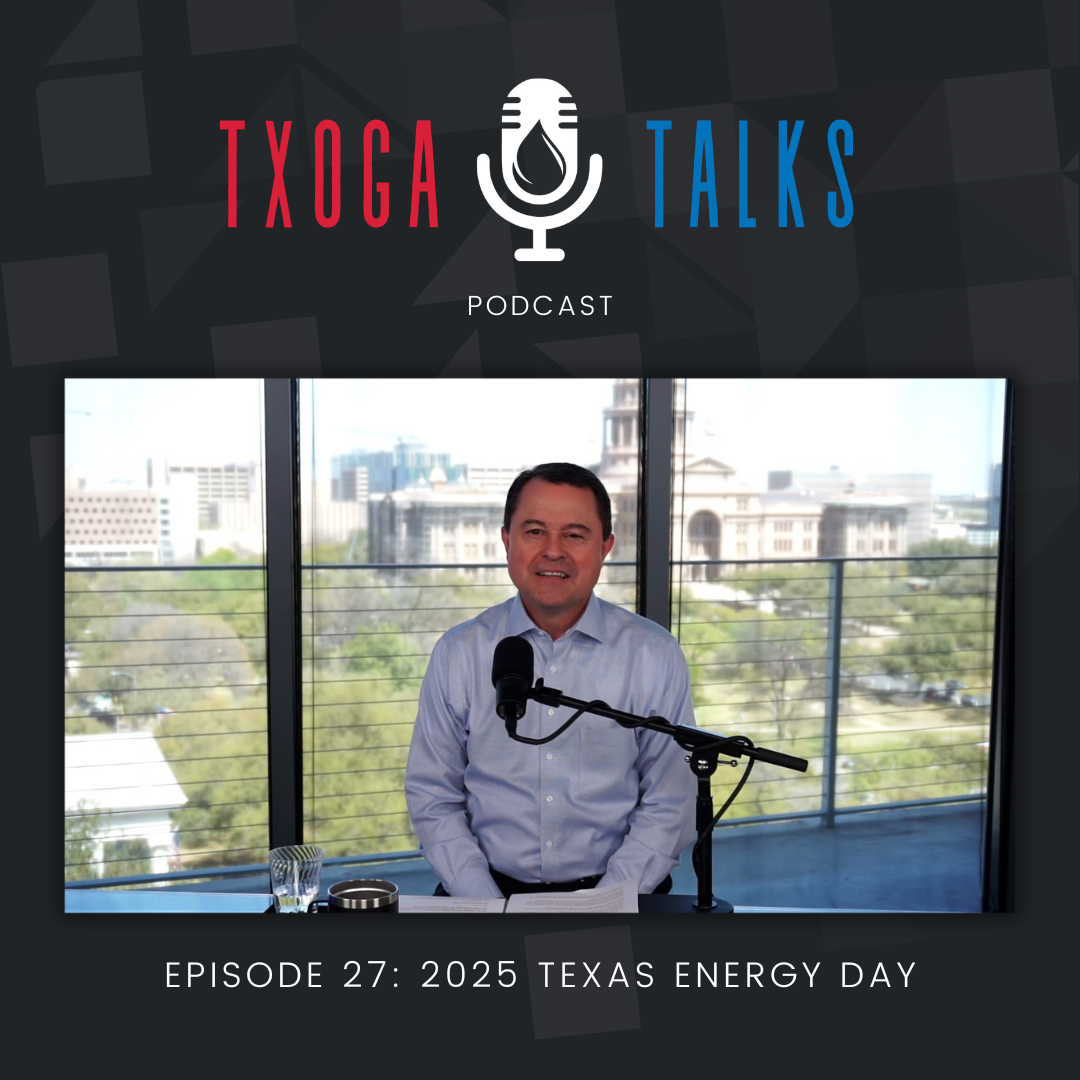Oil and Natural Gas Facts.
Setting the Record Straight.
Setting the Record Straight.
The Texas oil and natural gas industry plays a critical role in powering modern life in a cleaner, stronger and better way. Wondering if something you’ve read about industry is myth or fact? To set the record straight, here you’ll find clear, concise and accurate information about our industry that you may not find elsewhere. We are separating myth from fact, so you can better understand the industry, what we do every day, and how it benefits Texas.
Fact Checked
Here, we’re addressing misperceptions, correcting inaccuracies and clarifying information.
- Industry
- Emissions
- Fracking
- flaring
Industry
Myth: I can eliminate oil and natural gas in my everyday life.
Fact: Texas oil and natural gas fuels modern life as we know it. In fact, 96% of everyday essentials like soap, clothing, electronics pharmaceuticals, and cosmetics are made from petroleum. Coronavirus compounded industry’s importance, because nearly every in-demand product we need to be safe, to save lives and to power our economy – from face shields and hand sanitizers to high-speed internet connections and computers – is made possible by oil and natural gas. Further, oil and natural gas activity benefits every Texan – whether you live near the oil patch or not. Beyond the hundreds of thousands of jobs industry creates and billions in taxes industry pays, oil and natural gas improves the economic and social progress of communities here and around the world. The impact oil and natural gas activity has on the wellbeing of our state is incredible. There is no substitute for oil and natural gas for the products, fuels, and electricity that power modern life.
Myth: The oil and natural gas industry is unregulated.
Fact: The oil and natural gas industry is strictly regulated at the state and federal levels.
- At the federal level, the following agencies regulate oil and natural gas activity: Federal Energy Regulatory Commission (FERC), Bureau of Land Management (BLM), Bureau of Ocean Energy Management (BOEM), Bureau of Safety and Environmental Enforcement (BSEE), U.S. Environmental Protection Agency (EPA), Pipeline and Hazardous Materials Safety Administration (PHMSA), Securities and Exchange Commission (SEC), U.S. Department of Energy (DOE)
- At the state level in Texas, the Railroad Commission of Texas and the Texas Commission on Environmental Quality provide regulatory certainty for Texans and operators. While the regulation of oil and natural gas activities in Texas falls primarily under the jurisdiction of the RRC, TCEQ plays an important role in the areas of air quality, surface water management, water quality, and waste management. TCEQ has jurisdiction over air emissions resulting from flaring and venting operations at oil and natural gas production and processing sites, enforcing compliance with the state’s environmental laws and monitoring air quality within Texas to protect public health and the environment. FACT: The RRC is the state agency with primary regulatory jurisdiction over the oil and natural gas industry, pipeline transporters, natural gas and hazardous liquid pipeline industry, natural gas utilities, the LP-gas industry, and coal and uranium surface mining operations. The RRC exists under provisions of the Texas Constitution and exercises its statutory responsibilities under state and federal laws for regulation and enforcement of the state’s energy industries. The RRC also has regulatory and enforcement responsibilities under federal law, including the Surface Coal Mining Control and Reclamation Act, Safe Drinking Water Act, Pipeline Safety Acts, Resource Conservation Recovery Act, and Clean Water Act.
Emissions
Myth: Emissions from oil and natural gas are unchecked, unregulated and harmful to my health.
Fact: The EPA and TCEQ, among other regulatory agencies, set air and water quality standards WELL below levels that would cause a health concern. There are allowable emissions from oil and natural gas facilities, just like there are for other industries such as transportation and manufacturing, but again, these levels are set well below those that would cause health issues.
Myth: Methane emissions in Texas are high and increasing.
Fact: Methane emissions intensity in the Permian Basin has declined almost 70 percent since 2011, as oil and gas production rose over 320 percent. In fact, the Permian Basin stands apart from other global producers by remaining well below the flaring intensity of other global producers. For example, Russia’s flaring intensity was 239% higher than the Permian Basin, and 143% higher than the United States as a whole.
Source
Myth: Emissions from oil and natural gas facilities signal danger and are a sign of excessive pollution.
Fact: Texas emissions of pollutants have decreased significantly. All oil and natural gas facilities emissions must be authorized and permitted by the Texas Commission on Environmental Quality (TCEQ). According to the TCEQ:
- Between 2000 and 2018, VOC emissions decreased 48% and measured ground level ozone concentrations decreased 30%.
- Between 2000 and 2018, sulfur dioxide (SO ) emissions decreased 67%. Between 2000 and 2018, nitrogen oxides (NO ) emissions decreased 69% and measured ground level ozone concentrations decreased 30%.
Plus, emissions from any industrial facility must meet strict state and federal regulations. These regulations are developed to ensure that emissions are protective of public health and the environment. Further, what appears to be smoke from industrial operations is typically condensation of water vapor.
Source
Fracking
Myth: Fracking is unsafe and pollutes the air and water.
Fact: Properly conducted research, which has analyzed millions of air and water samples across the U.S., finds that oil and gas activity does not pose public health concerns. Texas has the nation’s most comprehensive air monitoring systems in the nation. The so-called “research” about harms to health cited by activists and even sometimes media are authored by known anti-oil and gas activists, funded by anti-oil and gas third parties.
The complex design of fracking wells, that include multiple layers of casing and cement, ensure the safety of groundwaters. Well bore construction and design is highly regulated and technically robust. Groundwater is permanently protected by several layers of steel casing (pipe) and cement, as well as thousands of feet of rock. A vast network of regulatory oversight ensures that wells are built according to regulations and cement quality requirements that guarantees the safety of ground water. Plus, oil and natural gas is found almost one mile deeper than the water table.
Source

Flaring
Myth: Flaring in Texas is high and increasing.
Fact: Texas has one of the lowest flaring rates of large oil and gas producing states in the country. According to the Railroad Commission, the statewide flaring rate in Texas fell to a record low- level of 0.2% in October. And, industry in Texas has a stated goal of eliminating routine flaring by 2030, with some operators having achieved that goal already.



